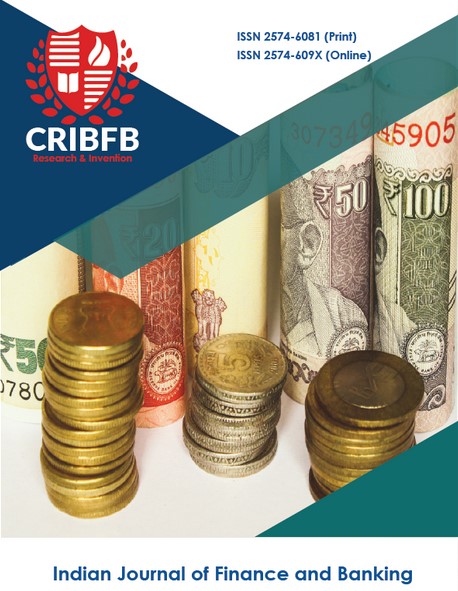MEASURING EFFICIENCY IN ASSETS AND LIABILITIES MANAGEMENT PRACTICES IN DEPOSIT TAKING NON- BANKING FINANCIAL COMPANIES IN INDIA: A CAMEL APPROACH
Main Article Content
Abstract
ALM technique is a strategic financial tool particularly focused on management of financial risks such as liquidity and interest rate risks only. In general, mismatch between assets and liabilities poses high risk (financial or non-financial risk) to the company’s capital. Therefore, company’s can protect their capital from various risks through proper management of assets and liabilities. Present study applied CAMEL technique to measure the efficiency of ALM practices of selected NBFCs-D in Tamilnadu for the period of 2011-2020. The study revealed that, SRTFL reported strongest level of financial soundness in the aspects of capital adequacy, management efficiency and earning efficiency whereas satisfactory level in liquidity and moderate/fair level in assets quality. Similarly, SRCUFL reported strong level in capital adequacy and earning efficiency, satisfactory level in assets quality and liquidity and fair level in management efficiency. Similarly, SFL has shown strongest level of performance in asset quality and earning efficiency, satisfactory in management efficiency, fair level in capital adequacy and marginal/poor level in liquidity. Similarly, SKFL reported satisfactory level in assets quality, fair level in capital adequacy and earning efficiency, marginal level in management efficiency and unsatisfactory/worst level in liquidity. Finally, NLOF has reported unsatisfactory/worst level of performance in all parameters except capital adequacy. This indicates high risk level/default level of the NLOFL during the study period.
JEL Classification Codes: A10, B21, G23.
Downloads
Article Details
Section
How to Cite
References
AL-Najjar, D., & Assous, H. F. (2021). Key determinants of deposits volume using CAMEL rating system: The Case of Saudi banks. PLOS ONE, 16(12), 1-15. https://doi.org/10.1371/journal.pone.0261184
Badrul Manir, M. b., & Ahmad Bustamam, U. S. (2017). CAMEL Ratio on Profitability Banking Performance (Malaysia Versus Indonesia). International Journal of Management, Innovation & Entrepreneurial Research, 3(1), 30-39. https://doi.org/10.18510/ijmier.2017.314
Kaur, J. (2016). Performance Evaluation of Gold Loan NBFCs using CAMEL Model. Pacific Business Review International, 1(1), 189-191.
Nguyen, A. H., Nguyen, H. T., & Pham, H. T. (2020). Applying the CAMEL Model to assess performance of Commercial Banks: Empirical Evidence from Vietnam. Bank and Bank Systems, 15(2), 177-186. http://dx.doi.org/10.21511/bbs.15(2).2020.16
Umarani, D., & Jayanthi, M. (2015). An Analysis of Asset-Liability Management in Indian Banks. International Journal of Business and Administration Research Review, 1(11), 179-183




